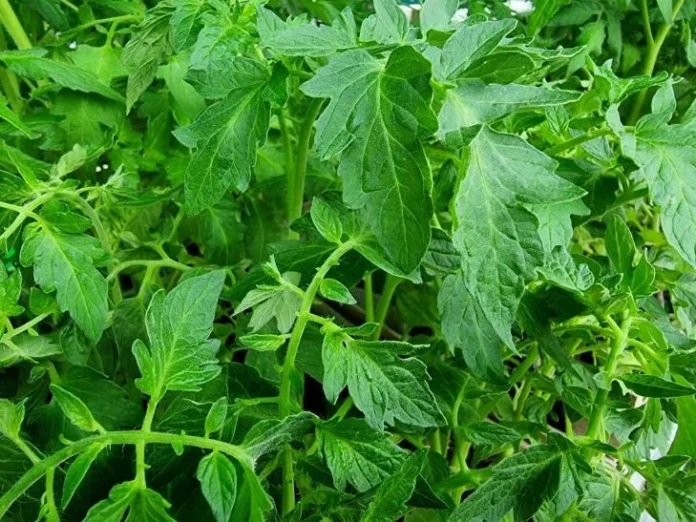In recent years, more and more gardeners have noticed that the leaves of the plants they grow are starting to curl..
In particular, we are talking about tomatoes and sometimes peppers, whose leaves are severely deformed, become blistered at the central vein, narrow and sometimes asymmetrical..
You may be surprised, but this ‘phenomenon’ has nothing to do with disease, but is associated with damage to plants by herbicides.
Where can herbicides appear in garden beds? One of the ways of ‘infection’ is along with grass from lawns treated with these substances. They also accumulate on the straw of grain crops and compost for up to two years.
When composting lawn grass or straw from fields where herbicides were used to control weeds, these substances are preserved. They are also preserved in manure.
After composting, the effectiveness of herbicides does not decrease.
And although many gardeners have no direct relation to manure, but, as it turns out, they use compost, vermicompost and granulated manure. Through these ‘materials’ herbicides get into the soil and plants.
To solve this problem, you should remove the damaged leaves and treat the plants with stimulating preparations – ‘Epin’ and ‘Zircon’.
Over time, the trimmed plants will have healthy leaves.
As an option, pour the beds with hay sticks, which quickly decompose the remains of herbicides. Humic preparations can also help in this difficult task.
In recent years, more and more gardeners have noticed that the leaves of the plants they grow are starting to curl..
In particular, we are talking about tomatoes and sometimes peppers, whose leaves are severely deformed, become blistered at the central vein, narrow and sometimes asymmetrical..
You may be surprised, but this ‘phenomenon’ has nothing to do with disease, but is associated with damage to plants by herbicides.
Where can herbicides appear in garden beds? One of the ways of ‘infection’ is along with grass from lawns treated with these substances. They also accumulate on the straw of grain crops and compost for up to two years.
When composting lawn grass or straw from fields where herbicides were used to control weeds, these substances are preserved. They are also preserved in manure.
After composting, the effectiveness of herbicides does not decrease.
And although many gardeners have no direct relation to manure, but, as it turns out, they use compost, vermicompost and granulated manure. Through these ‘materials’ herbicides get into the soil and plants.
To solve this problem, you should remove the damaged leaves and treat the plants with stimulating preparations – ‘Epin’ and ‘Zircon’.
Over time, the trimmed plants will have healthy leaves.
As an option, pour the beds with hay sticks, which quickly decompose the remains of herbicides. Humic preparations can also help in this difficult task.
In recent years, more and more gardeners have noticed that the leaves of the plants they grow are beginning to curl..
In particular, we are talking about tomatoes and sometimes peppers, the leaves of which are severely deformed, become bubbly at the central vein, narrow and sometimes asymmetrical..
You may be surprised, but this «phenomenon» has nothing to do with the disease, but is associated with damage to plants by herbicides.
Where can herbicides come from in garden beds? One of the ways of «contamination» is through grass from lawns treated with these substances.They also accumulate on grain straw and compost for up to two years.
When you compost lawn grass or straw from fields where herbicides have been used to control weeds, these substances are retained.They are also preserved in manure.
After composting, the effectiveness of herbicides does not decrease.
And although many gardeners do not have a direct relationship with manure, as it turns out, they use compost, vermicompost and granulated manure.Through these «materials» herbicides enter the soil and plants.
To solve this problem, you should remove the damaged leaves and treat the plants with stimulating drugs – Epin and Zircon.
Over time, trimmed plants will develop healthy leaves.
As an option, water the beds with hay bacillus, which quickly decomposes the remains of herbicides. Humic preparations can also help in this difficult task.


